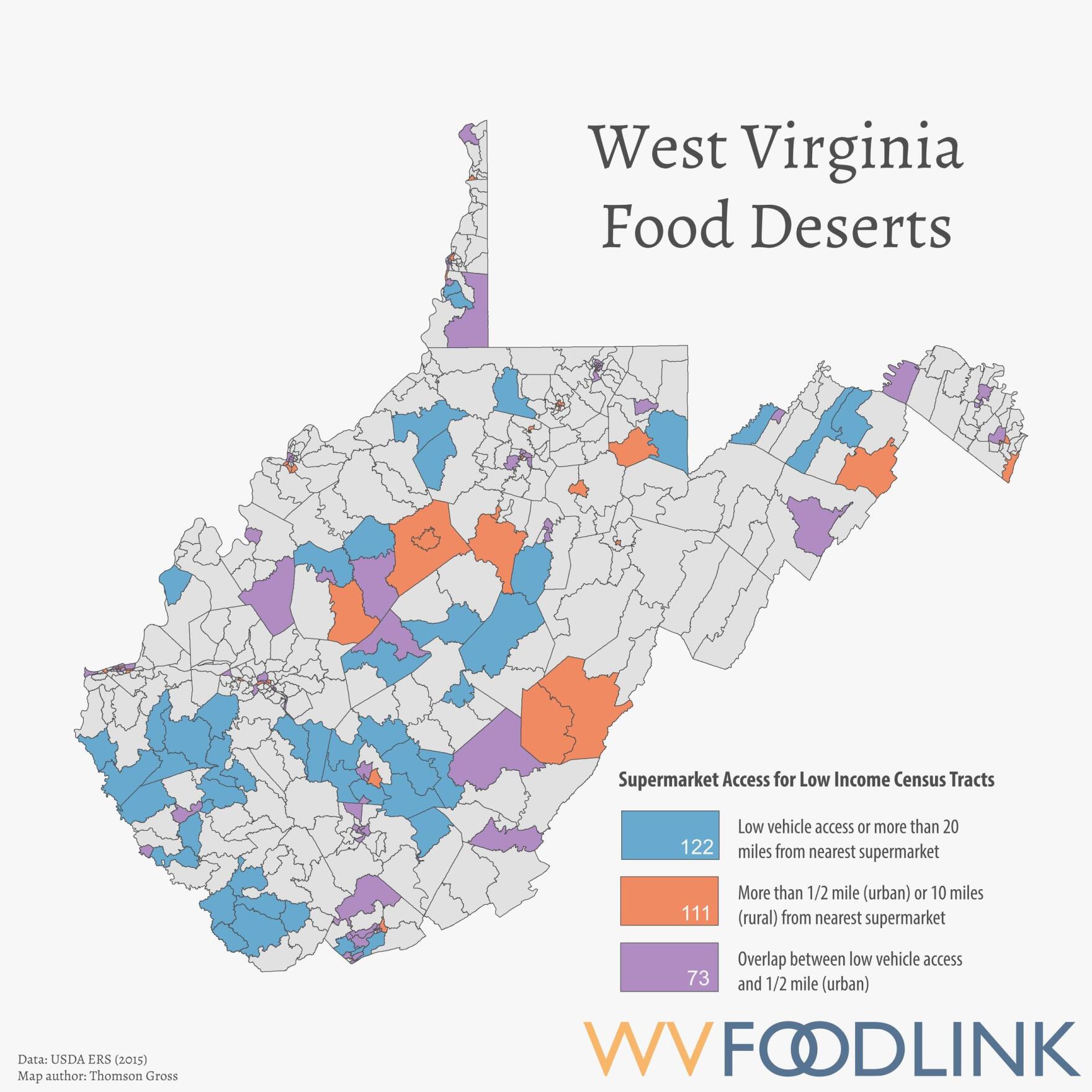Researchers at West Virginia University are working to holistically understand “food insecurity” throughout West Virginia with a program they call WV FOODLINK.
The program is trying to connect people to food resources that already exist throughout the state, while exploring unmet needs and what might be done to fill them. It’s a moving target, but researchers say West Virginians are an innovative bunch.
According to data from the US Census Bureau, about 15 percent of all West Virginians, or about one in seven is “food insecure,” which means they have a hard time at some point throughout the year putting food on the table for lack of money, access, or resources in general. But what does that really mean? How many people in West Virginia are hungry right now? WVU researcher Bradley Wilson says the short answer is: we don’t really know.
WV FOODLINK
“The story of West Virginia is all of these statistics about obesity, health problems, poverty, depression,” said Bradley Wilson, a professor of Geography at West Virginia University. Wilson has been studying food and hunger issues and, importantly, thinking about why and how we are in our present situations.
"There's a massive network of emergency food assistance agencies serving between 200,000 – 300,000 people a month," Wilson said.
“Economic changes, the decline of manufacturing, the decline of coal – these are the cards people have been dealt and they’ve been making that work. There’s a certain creativity that is not the story of West Virginia that is often told.”
Wilson is the director of an ongoing project at the university called WV FOODLINK. When the project launched Wilson quickly came to discover more than 650 agencies working to combat hunger across the state.
“There’s a massive network of emergency food assistance agencies serving between 200,000 – 300,000 people a month,” Wilson said.
Food pantries, soup kitchens, charities, nonprofits, free school meal programs – Wilson and his team call it the Emergency Food Network – and in the WV FOODLINK labs, they’ve been gathering a lot of data to try and grasp the extent of the network. Researchers created a website to help spread information about the needs and work that’s being done around the state.
Mapping Vulnerability
But we live in a very fluid and changing world. We almost need real-time maps to keep up with the morphing food landscapes.
“This emergency food network is itself extremely vulnerable,” said Joshua Lohnas, a PHD student in the Department of Geography at WVU and the Associate Director of FOODLINK, “and we’re finding a lot of food pantries closing shop even since we started this project.”
Lohnas is observing one major trend: the rise and popularity of “alternative food networks” like farmers markets and CSAs.
But farmers markets today still only feed about 1% of the state’s population.
“Solutioning”
“We are not anti-farmers markets,” insists Wilson. “We WANT farmers markets. But how do you build both? I think that’s where a lot of the innovative stuff is happening.”
Wilson says there’s a lot of “solutioning” going on: food pantries with hydroponics operations, gardeners’ consignment shops, mobile markets, food pantries hosting farmers markets or growing their own food – these are some of the innovations we’re beginning to see in West Virginia. Wilson says it’s not likely any one solution will solve all the problems we face, more innovative work that combines the popular alternative food movement and the emergency food network is what West Virginia needs.
“The way to scale up the alternative food networks is ultimately going to have to address how to invite low income families to participate.”
To that end, Wilson and Lohnas are collaborating with MANY organizations to help connect efforts. Facing Hunger Food Bank, Mountaineer Food Bank, Volunteer Organizations Active in Disasters (VOAD), Claude Worthington Benedum Foundation, Sisters of St. Joseph Charitable Fund, Appalachian Foodshed Project, WV Food and Farm Coalition, WV Farmer’s Market Association, West Virginia GIS Tech Center as well as county-level anti-hunger coalitions throughout West Virginia.




















